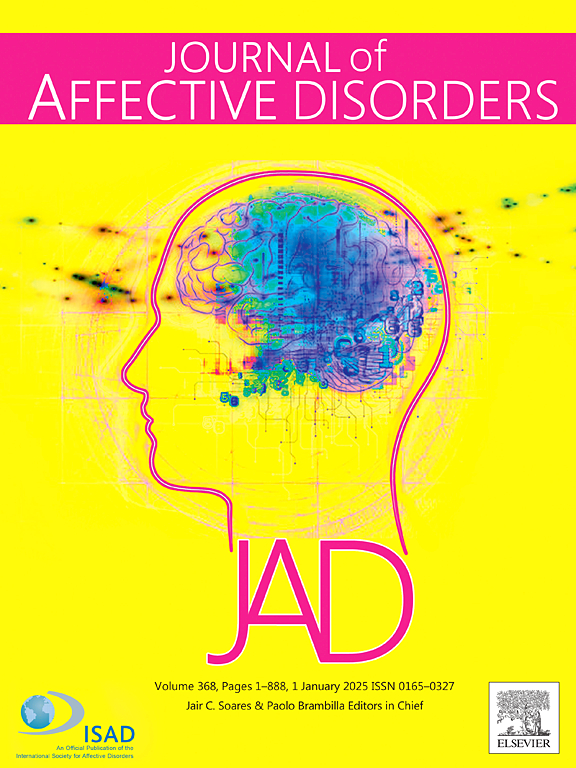Association between adverse childhood experiences and antenatal depression among pregnant women: A computer-simulated network analysis
IF 4.9
2区 医学
Q1 CLINICAL NEUROLOGY
引用次数: 0
Abstract
Objectives
This study aims to investigate the differences in depressive symptoms among pregnant women with and without adverse childhood experiences (ACEs), identify distinct core and bridge symptoms of depression in both groups, and target specific symptoms for intervention.
Methods
A total of 2719 pregnant women were recruited from the “Be Resilient to Postpartum Depression” program. ACEs and depressive symptoms were assessed using validated scales. Data analysis was conducted using a computer-simulated network analysis approach.
Results
A significant positive correlation was found between the total ACEs score and depression score (r = 0.181, P < 0.001). In the non-ACEs group, “I can laugh and see the funny side of things” was the core and most bridge symptoms, as well as the targeted intervention symptom for aggravating the depressive symptoms. In the ACEs group, “I feel cheerful” emerged as the core and most bridge symptoms, while “I look forward with enjoyment to things” was identified as the targeted intervention symptom for aggravating the depressive symptoms. “I still enjoy the things I used to enjoy” was recognized as a targeted symptom for alleviating depressive symptoms in both groups.
Conclusion
This study underscores the nuanced relationship between ACEs and antenatal depression, underscoring the need for tailored mental health interventions that consider the history of childhood adversity among pregnant women.
不良童年经历与孕妇产前抑郁之间的关系:一项计算机模拟网络分析
目的探讨有和无不良童年经历(ace)孕妇抑郁症状的差异,确定两组明显的抑郁核心和桥梁症状,并针对特定症状进行干预。方法从“抗产后抑郁”项目中招募2719名孕妇。使用有效的量表评估ace和抑郁症状。数据分析采用计算机模拟网络分析方法进行。结果ace总分与抑郁总分呈显著正相关(r = 0.181, P <;0.001)。在非ace组中,“我能笑,看到事物有趣的一面”是最核心和最过桥的症状,也是加重抑郁症状的针对性干预症状。在ace组中,“我感到快乐”是核心症状和最主要的桥状症状,而“我期待并享受事物”被确定为加重抑郁症状的针对性干预症状。“我仍然喜欢我过去喜欢的东西”被认为是缓解两组抑郁症状的目标症状。结论:本研究强调了ace与产前抑郁之间的微妙关系,强调了考虑孕妇童年逆境史的量身定制心理健康干预的必要性。
本文章由计算机程序翻译,如有差异,请以英文原文为准。
求助全文
约1分钟内获得全文
求助全文
来源期刊

Journal of affective disorders
医学-精神病学
CiteScore
10.90
自引率
6.10%
发文量
1319
审稿时长
9.3 weeks
期刊介绍:
The Journal of Affective Disorders publishes papers concerned with affective disorders in the widest sense: depression, mania, mood spectrum, emotions and personality, anxiety and stress. It is interdisciplinary and aims to bring together different approaches for a diverse readership. Top quality papers will be accepted dealing with any aspect of affective disorders, including neuroimaging, cognitive neurosciences, genetics, molecular biology, experimental and clinical neurosciences, pharmacology, neuroimmunoendocrinology, intervention and treatment trials.
 求助内容:
求助内容: 应助结果提醒方式:
应助结果提醒方式:


